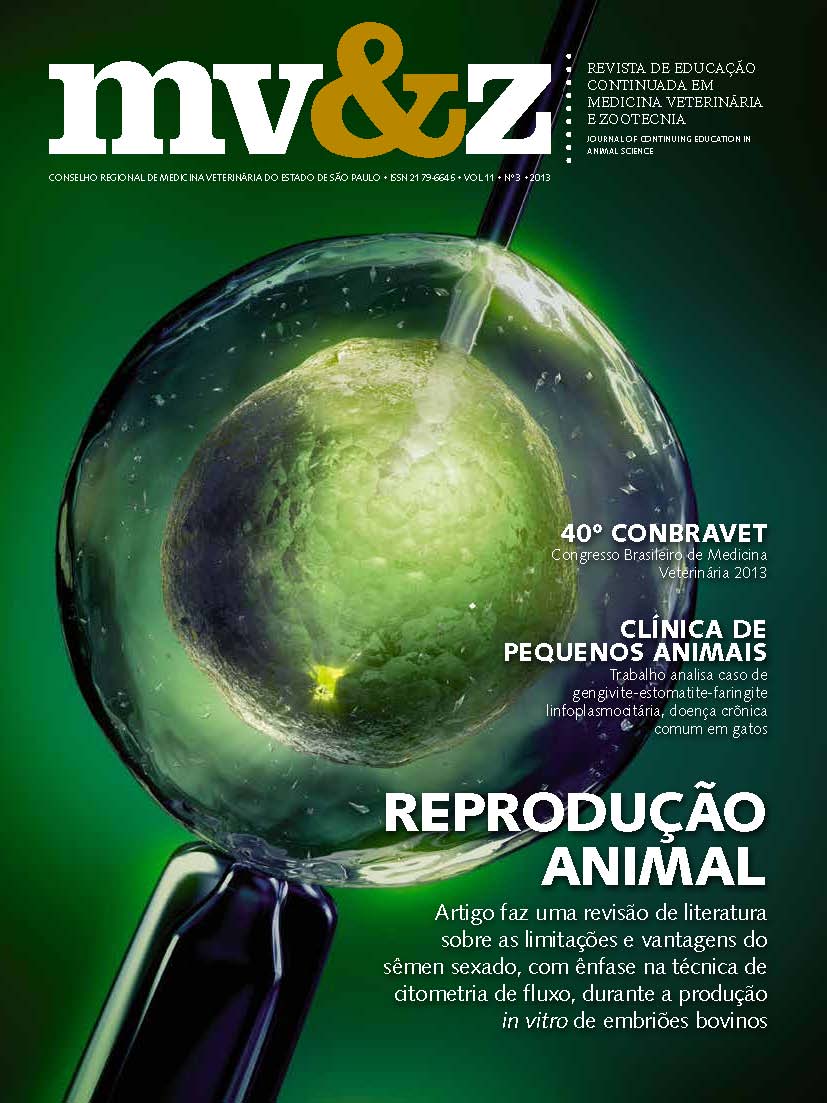Perception and knowledge of veterinarians and pet storeowners about ectoparasitic control of cats and dogs: scenario in eight Brazilian states in 2003 and market evolution in the state of São Paulo in 2011
Main Article Content
Abstract
Veterinarians and Pet Store owners can influence the buying decision of veterinary products, and therefore it is important to know their knowledge about the products available in the market, as well as the key concepts relating to its use. The aim of this paper was the evaluation, in a broad sense, of the knowledge of these individuals about ectoparasitic control. During the year 2003, 202 interviews were conducted in eight Brazilian states (Rio Grande do Sul, Paraná, São Paulo, Rio de Janeiro, Minas Gerais, Mato Grosso do Sul, Goiás e Ceará): 97 of them with Veterinarians (Vets) and 105 with Pet Store Owners (PSO). In 2011, the same survey was conducted only, in the state of São Paulo where it was performed, 25 interviews with Vets and 27 with PSO. The results obtained showed that Vets and PSO have a good knowledge about integrated control (IC), but their customers do not. Ticks were the ectoparasite most frequently reported as a problem for both Vets and PSO. The comparison of 2003 versus 2011 results showed a significant difference in the knowledge of PSO about IC was noticed, with a marked decrease in the most recent survey. Spot on was found as the ideal application method on both occasions, showing however, increased predilection in 2011 survey. Based on the comparisons between the two surveys, three hypotheses regarding knowledge and perception of Vets and PSO are presented as interesting topics for future research. They address respectively the specific knowledge of the PSO, the perception of Vets about the effectiveness of ectoparasitic products and their safety.
Article Details
1. Autores mantém os direitos autorais e concedem à revista o direito de primeira publicação, com o trabalho licenciado sob a Creative Commons Atribuição-NãoComercial-SemDerivações 4.0 Internacional
2. Autores têm autorização para assumir contratos adicionais separadamente, para distribuição não-exclusica da versão do trabalho publicada nesta revista (ex.: publicar em repositório institucional ou como capítulo de livro), com reconhecimento de autoria e publicação inicial nesta revista.
3. Autores têm permissão e são estimulados a publicar e distribuir seu trabalho online (ex.: em repositórios instituicionais ou na sua página pessoal) a qualquer ponto antes ou durante o processo editorial, já que isso pode gerar alterações produtivas, bem como aumentar o impacto e a citação do trabalho publicado (Veja O Efeito do Acesso Livre);
